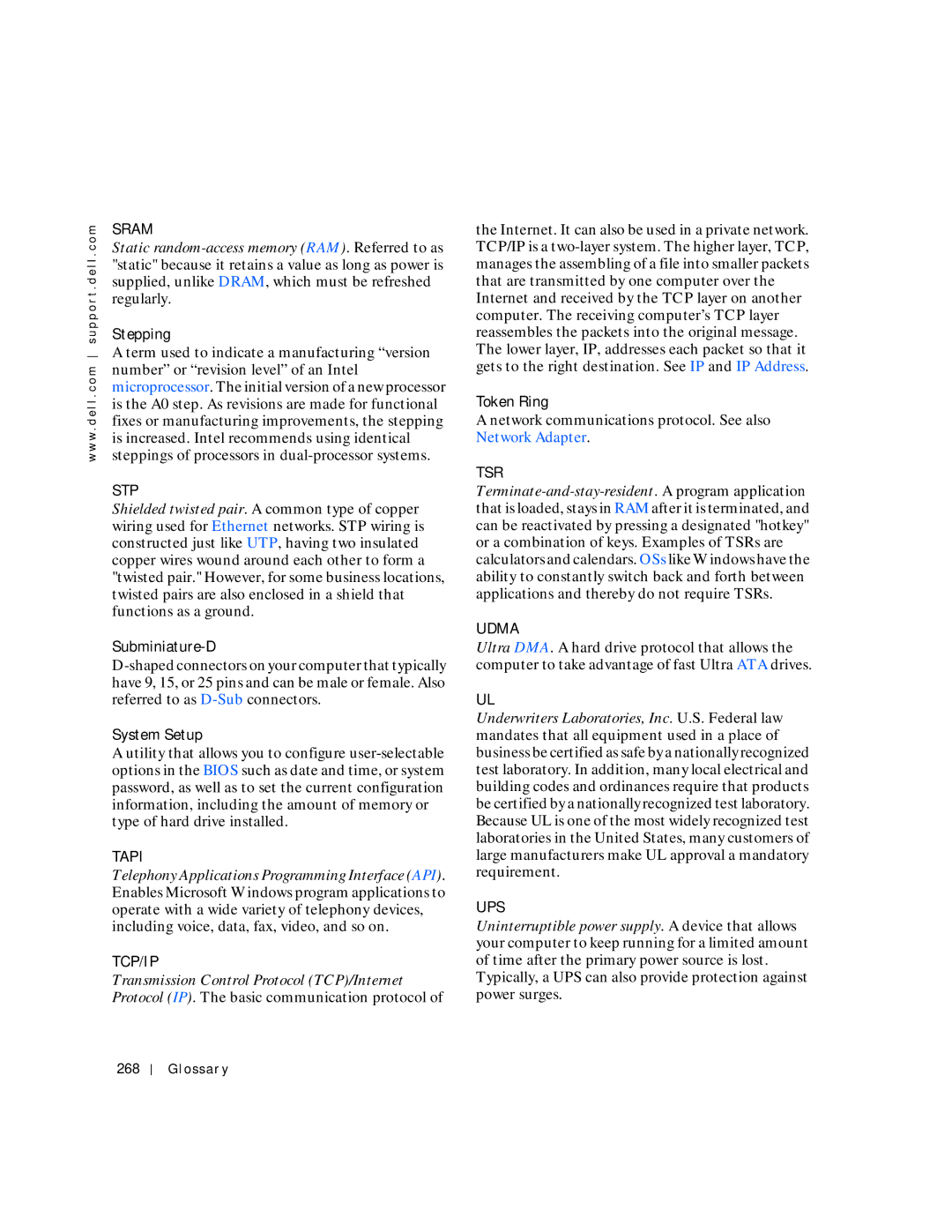w w w . d e l l . c o m s u p p o r t . d e l l . c o m
SRAM
Static
Stepping
A term used to indicate a manufacturing “version number” or “revision level” of an Intel microprocessor. The initial version of a new processor is the A0 step. As revisions are made for functional fixes or manufacturing improvements, the stepping is increased. Intel recommends using identical steppings of processors in
STP
Shielded twisted pair. A common type of copper wiring used for Ethernet networks. STP wiring is constructed just like UTP, having two insulated copper wires wound around each other to form a "twisted pair." However, for some business locations, twisted pairs are also enclosed in a shield that functions as a ground.
Subminiature-D
System Setup
Autility that allows you to configure
TAPI
Telephony Applications Programming Interface (API). Enables Microsoft Windows program applications to operate with a wide variety of telephony devices, including voice, data, fax, video, and so on.
TCP/IP
Transmission Control Protocol (TCP)/Internet Protocol (IP). The basic communication protocol of
the Internet. It can also be used in a private network. TCP/IP is a
Token Ring
A network communications protocol. See also Network Adapter.
TSR
UDMA
Ultra DMA. A hard drive protocol that allows the computer to take advantage of fast Ultra ATA drives.
UL
Underwriters Laboratories, Inc. U.S. Federal law mandates that all equipment used in a place of business be certified as safe by a nationally recognized test laboratory. In addition, many local electrical and building codes and ordinances require that products be certified by a nationally recognized test laboratory. Because UL is one of the most widely recognized test laboratories in the United States, many customers of large manufacturers make UL approval a mandatory requirement.
UPS
Uninterruptible power supply. A device that allows your computer to keep running for a limited amount of time after the primary power source is lost. Typically, a UPS can also provide protection against power surges.
268
Gl ossar y
